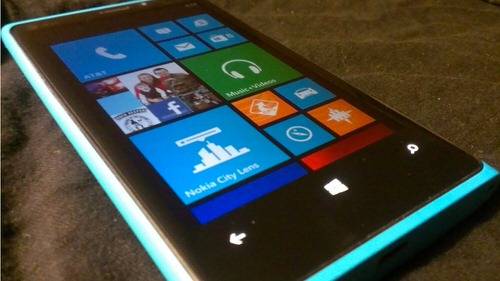
Microsoft is all-in on mobile with Windows Phone. Which is good, because it really doesn’t have much of a choice.
The Windows Phone mobile operating system has been on the market for three years. It’s been a year and a half since Nokia released its first Lumia device running the OS and nearly a year since the manufacturer made its first big foray into the United States with the Lumia 900. To what effect?
A whopping 3% of market share in the fourth quarter, that’s what. Granted, Microsoft has doubled its share since the same period in 2011 — but it’s not exactly the exponential growth Redmond was probably hoping for.

As you can see, Android is the runaway leader in the smartphone operating system sector, with 69.7% of global market share. Apple’s iOS is second at 20.9%.
Speaking at the Goldman Sachs Technology and Internet Conference this morning, Microsoft CFO Peter Klein affirmed that the company is still running full tilt with its current strategy. Asked on stage about a “Plan B” for Microsoft’s mobile and PC strategy, Klein implied there wasn’t one, though without denying it explicitly.
“It’s less ‘Plan B’ than how you execute on the current plan,” Klein said according to Reuters.
This Is Plan B
It’s easy to forget, but for Microsoft, Windows Phone already is Plan B. Not that long ago, the company’s earlier mobile operating system — Windows Mobile CE — held more than 10% of the smartphone market several years ago. Then Microsoft decided to scrap Windows Mobile and its aging code base to build Windows Phone 7.
Incredibly, Microsoft then completely borked Windows Phone 7 when it released Windows Phone 8. Apps that work for the earlier version have to be completely rebuilt for the newer one. From a technological perspective, this made sense. When Microsoft finally released Windows 8 (and Windows RT) in the fall of 2012, its aim was to standardize user interfaces across PCs, tablets and smartphones — theoretically making them all easier to use and for developers to build apps on.
But from a development and marketing standpoint, the decision to fragment its brand new mobile operating system bordered on lunacy. Many users who bought Windows Phone 7 smartphones felt betrayed when they learned their devices wouldn’t be upgraded to Windows Phone 8 and that their existing apps wouldn’t work on new phones. It didn’t help that Nokia had rolled out a Windows Phone 7 campaign declaring that “the smartphone beta test is over.”
Microsoft really can’t afford to do that again. Fortunately, it’s got about three years to stabilize in the market and let users get comfortable with its radically new — but more consistent — Metro-style interface across mobile devices and PCs.
That’s because Microsoft’s normal development tends to run in three-year cycles. Windows 8 came three years after Windows 7, which came roughly three years after Windows Vista. Microsoft will certainly issue updates to Windows Phone in the process, but it can’t — and shouldn’t even if it could — fundamentally alter its OS approach in that time frame.
In three years we’ll know if Windows Phone 8 has gained any traction in the market and if Microsoft’s bets have paid off in the tablet and PCs sectors. Microsoft has plenty of money to run through a couple of terrible years. But if there’s not more significant movement by 2016, we can pretty much start the Death Watch in Redmond.
So of course there’s no Plan B (or, more accurately, Plan C). Microsoft has painted itself into a corner, and now has to wait for the floor to dry.
The Same Old Strategy
Basically, then, Klein is right. All Redmond can do is execute the current plan. Which is to get as many manufacturers on the Windows Phone train as possible in order to produce a lineup of smartphones that’s available around the world on multiple carriers and in a variety of sizes, features and prices. It needs to “out-Samsung” Samsung and Android at the global distribution game — and drag Nokia along with it.
That will also entail throwing hundreds of millions, perhaps billions, of dollars into marketing and advertising. This is the same strategy that Microsoft used with its Xbox gaming console, to great success. Expect to see a lot more “Smoked By Windows Phone” types of campaigns, more Windows Phones seeded to “enthusiastic” mommy bloggers and more press outreach. For Microsoft, throwing dollars down the marketing hole is its only chance to set itself up as a real rival to Android and Apple.
Correction: A previous version of this article stated the Lumia 920 was released close to a year ago. It has been corrected to state the Lumia 900, released to AT&T in early April 2012.

















